Utah is known for its unique and diverse landscape, ranging from the Great Salt Lake to the Wasatch Mountains. With this stunning scenery comes a wide variety of mushrooms as well.
This article will explore the types of mushrooms found in Utah and the ways they are used. From edibility to decomposing purposes, these fungi play an important role in the state’s ecology.
Common Utah mushrooms include morels, king boletes, lion manes, velvet shiitakes and chanterelles.
List of Utah Mushrooms
1. Leucoagaricus Leucothites (White Dapperling)
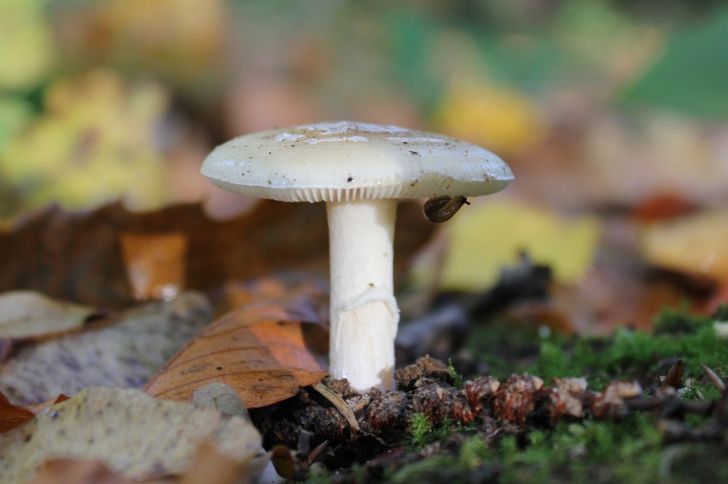
Leucoagaricus leucothites, also known as the white dapperling, is a fungus species that is widely distributed across Utah.
This species can easily be identified by its distinct white cap which is up to 3.5 inches in diameter. Like the parasol mushroom, its pileus starts out in a convex shape becoming flat with maturity. Cap may be smooth or with scales.
Its gills are free but very crowded and appear pure white when young. As they mature they become pinkish. Note, it has a noticeable ring on its long stem. Are white dapperlings edible? Mycologists are yet to classify its and we recommend you avoid it.
2. Boletus Edulis (King Bolete)
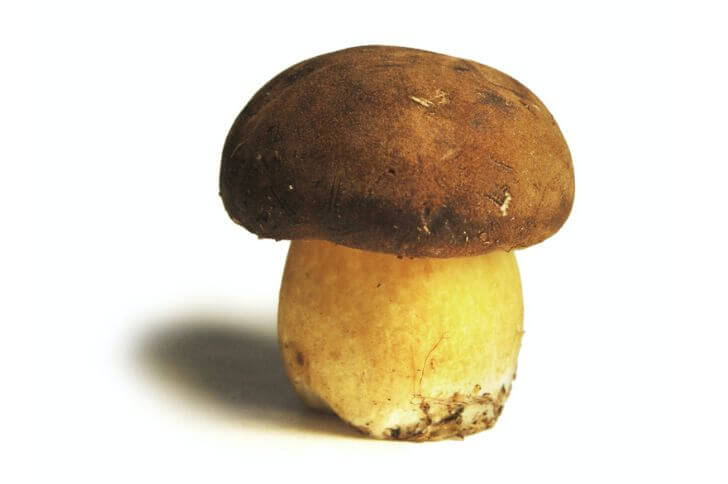
Boletus edulis, common name porcini, king bolete or cep mushroom, is one of the most popular in the West including UT.
In the Beehive State it is found in small clusters but sometimes can be seen growing singly. It prefers hardwood forests; mostly areas with lots of pine, hemlock, and spruce.
The cap of Boletus edulis is usually reddish-brown with cream or yellowish colored pores on its underside instead of gills. Its barrel-shaped stem can be anywhere from 3.9-7.8 inches wide. The flesh has a strong earthy aroma and taste.
3. Chanterelles
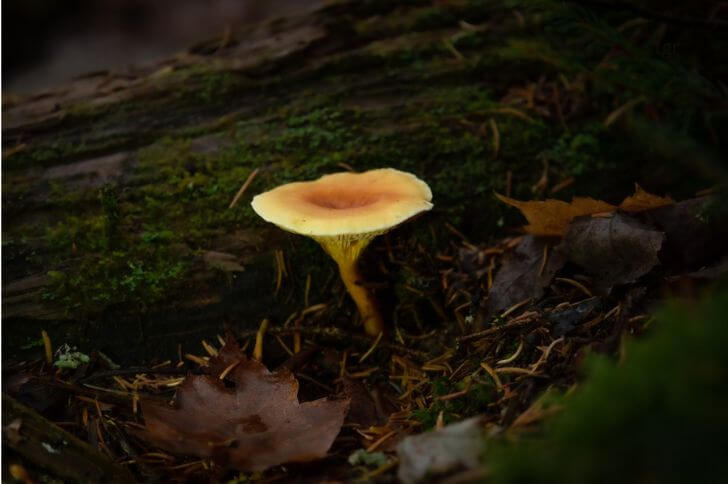
There are two varieties of chanterelles in Utah.
Cantharellus roseocanus: They grow in summer and fall. They are a rare member of the cantharellaceae family, found in the West only.
This rare species can be identified by its unique appearance and distinctive colors. The caps are yellow to orange with no gills on the underside.
In addition, these mushrooms have a distinct fruity aroma that resembles apricot or peach.
Cantharellus cibarius: The golden chanterelle is most commonly recognized for its deep yellow color and trumpet-like shape.
They grow in clusters in moist woodlands on the ground, making them easy to spot when they reach maturity. Additionally, they have a fruity aroma that can be detected even from yards away when looking for them in nature.
Related Read: Check Colorado Mushrooms
4. Hypomyces Chrysospermus (Bolete Eater)
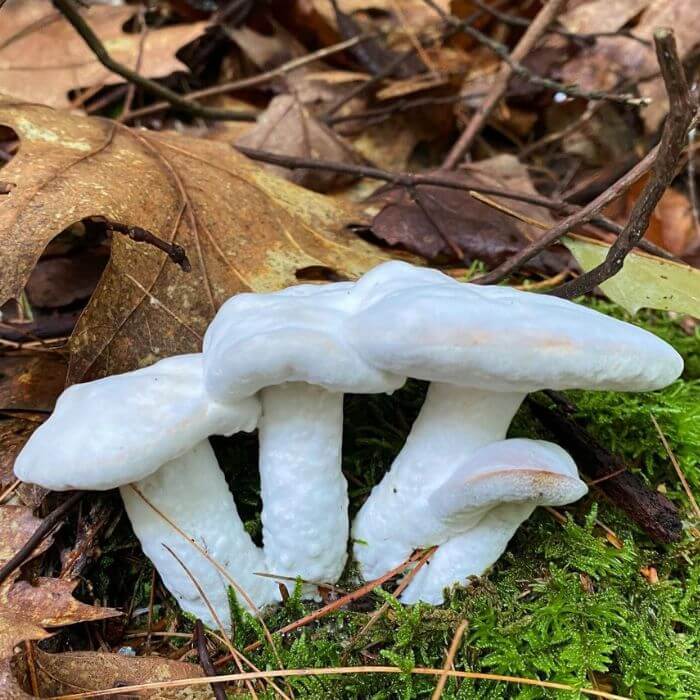
source:lady_chaga
Is hypomyces chrysospermus edible? No. This Utah fungus is inedible.
It is commonly referred to as Bolete Mold due to its parasitic relationship with some boletes. Identifying this particular mushroom is relatively easy; it typically appears as a large white or yellow growth. The outer surface of Hypomyces chrysospermus often has small bumps.
5. Boletus Barrowsii (White King Bolete)
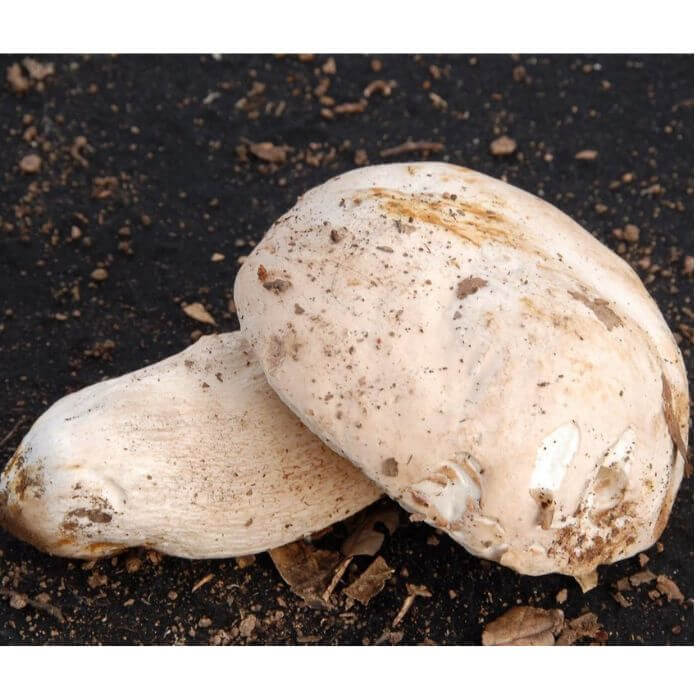
source: ocmushrooms
Boletus barrowsii is an increasingly popular species of mushroom that occurs in Utah. It is a medium-sized to large bolete mushroom with an all white fruiting body.
The size of Boletus barrowsii ranges from 2 inches to 10 inches in diameter when fully mature. Its caps are often convex when young but become more flatten with age. Like the porcini above, the white king boletes are edible.
6. Suillus Brevipes (Stuby-Stalk)
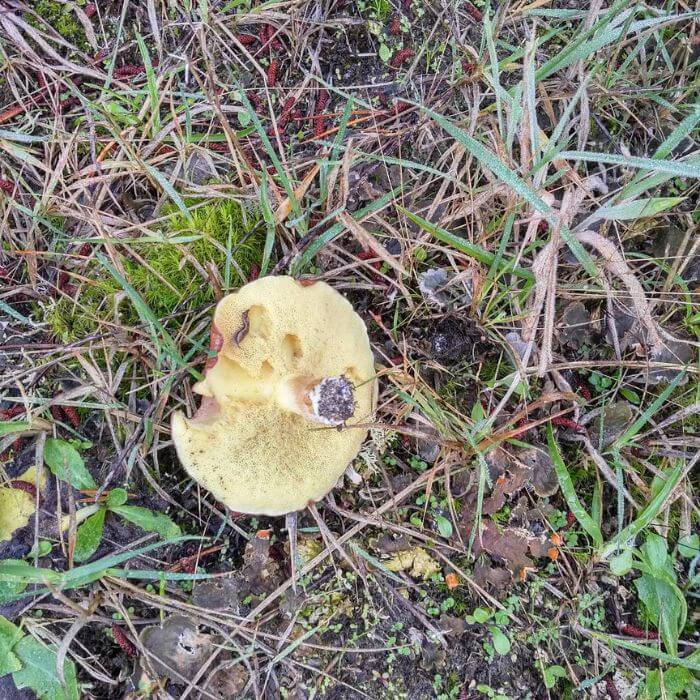
source: beach_doggie
Often found in tiny groups of twos or threes, suillus brevipes or stuby-stalk are another type of edible mushrooms in Utah.
Also known as short-stemmed Slippery Jack, they typically occur under pines. Suillus brevipes has a nearly flat orange-brown or dark reddish cap with a yellowish center that measures between 2-3.7 inches across.
The stalk is short. It has a very slimy texture due to its coating of viscid slime. Additionally, the underside of the cap features small brown pores which are usually circular or angularly distributed.
When cut open, stuby-stalks have white to pale yellow flesh with no distinctive odor or taste.
7. Morels in Utah
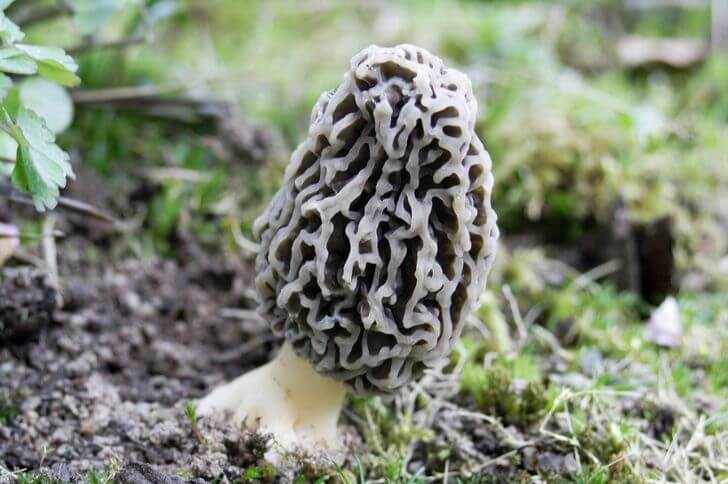
Common morel varieties in UT include:
Morchella americana: White morels are characterized by their unique honeycomb-like caps with a whitish-pale yellow color. Additionally, it has an irregular shape with an indented top and no veil on its underside.
Morchella populiphila: Another mushroom that is only found in Western North America is the morchella populiphila.
They can be found growing in areas with rich soil, such as old orchards, burned forests, and sometimes along riverbanks. Unlike most morels, their stipe is longer than the convex cap. Look for them from March through May.
Morchella snyderi: These morels are one of the most interesting fungi of Utah. They occur naturally and during its first few days of growth it resembles the yellow morel.
As it matures, the ridges and pits become dark brown. The cap is also broadly canonical compared to other morels in Utah.
Verpa bohemica: Also called the early morels, the verpa bohemica or wrinkled thimble-cap is a pale yellow morel that is typically the first morel to appear in spring.
Like the morchella synderi it has an almost bell-shaped cap that is characterized by pits and ridges.
8. Cerioporus Squamosus (Dryad’s Saddle)
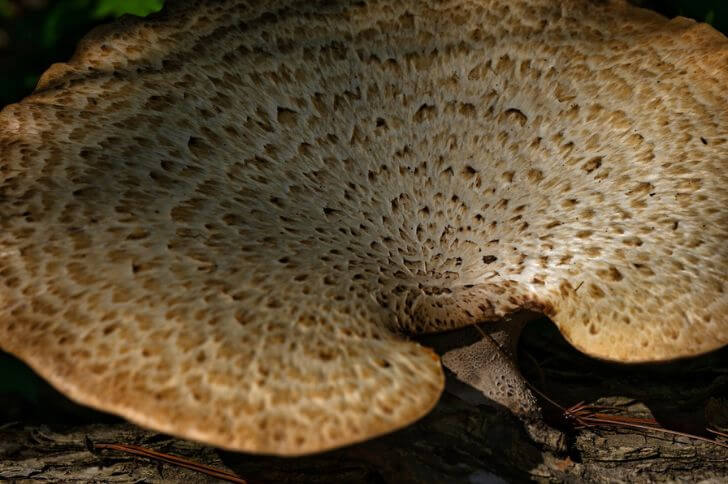
Pheasant’s-back mushroom is a species of polypore that is common in North America. In Utah, this shelf fungus pops up at the same time as morels; spring.
Also known as the dryad’s saddle, it is an off-white to yellowish-brown color with a large fan shaped cap that can grow up to 12 inches wide.
Its underside has small pores and it also has many dark colored scales on the surface which give it a pheasant like appearance. Furthermore, Dryad’s saddle has a white spore print and its flesh is very tough and leathery when touched.
9. Lion’s Mane
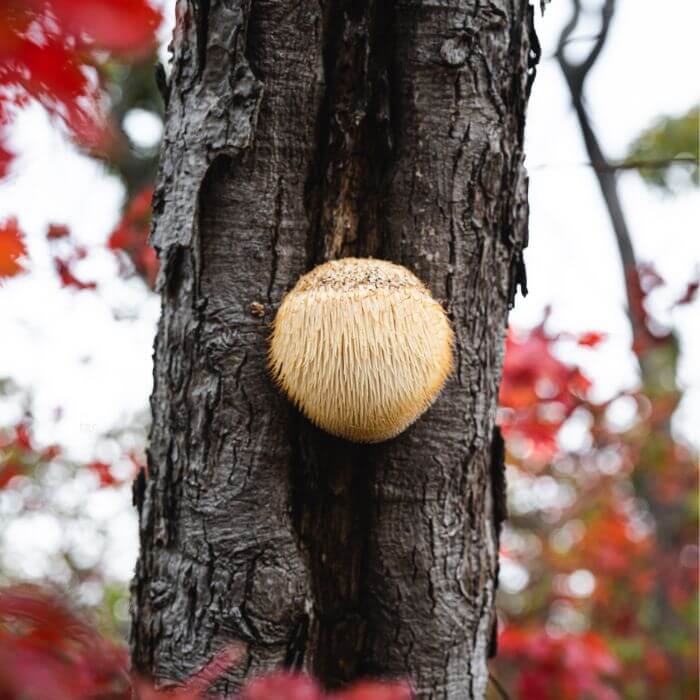
With one of the fiercest names in the fungi world, the lion’s mane is an interesting mushroom to look at. There are no true lookalikes.
Its fruiting body is large, 2-15.5 inches across and is more rounded and compact compared to other Hericium species. Note its spines are also shorter. You can learn more about lion’s mane on this list of white wild fungi.
10. Flammulina Velutipes (Enoki)
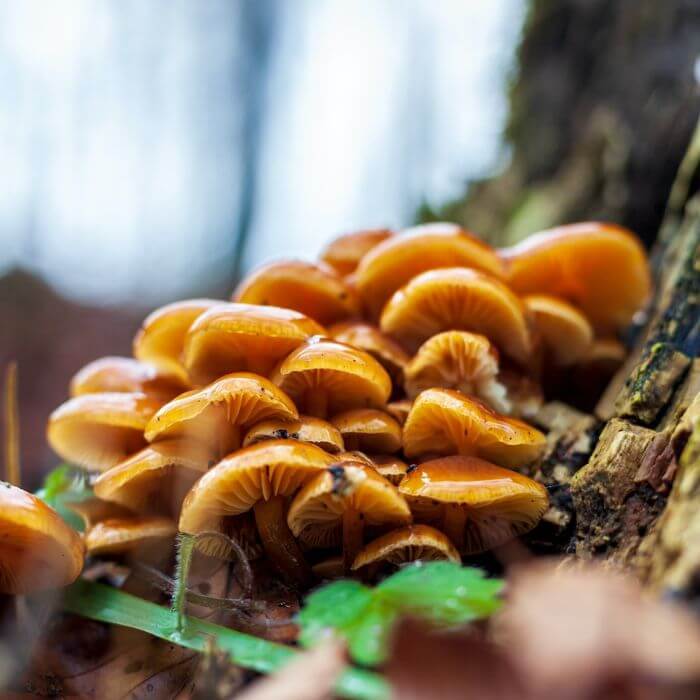
Velvet shanks or enoki, scientifically called flammulina velutipes, is another mushroom of Utah every forager should know about.
Where can you find velvet shanks in Utah? They grow saprodically both on living and stumps of hardwood trees with exception of poplars. You’ll spot them in tight clusters with convex caps that become disfigured due to the crowding.
Their color ranges from dark orange to brownish and their surface is a bit sticky. Stems are also the same color and curved.
When harvesting velvet shanks we recommend you go for younger fungi and collect the caps only. Can you eat velvet shank? Yes. They are typically used in salads, in beef rolls and soups.
Related: mushrooms of Arizona
11. Lycoperdon Perlatum (Common Puffball)
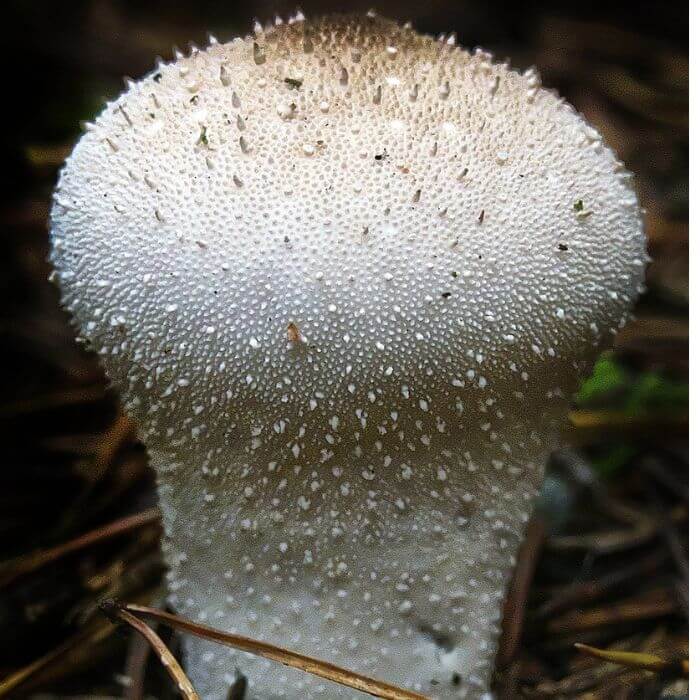
Are there puffballs in Utah? Yes, you can find the common puffball in the Badger State. It’s a fungus with many other common names including gem-studded puffball and devil’s snuff-box.
It is one of the most instantly recognizable and endearing species of mushrooms. This small mushroom usually appears in woodlands from July-October on rotting wood chips, logs or stumps.
Common puffballs have a pear-like shape with a diameter of 0.8 inches when young that gradually expands to 2.7 inches at maturity stage.
Its top is covered by an outer layer of tiny warts of different sizes; hence its other common name, gem studded puffball.
12. Ramaria Aurea (Golden Coral)
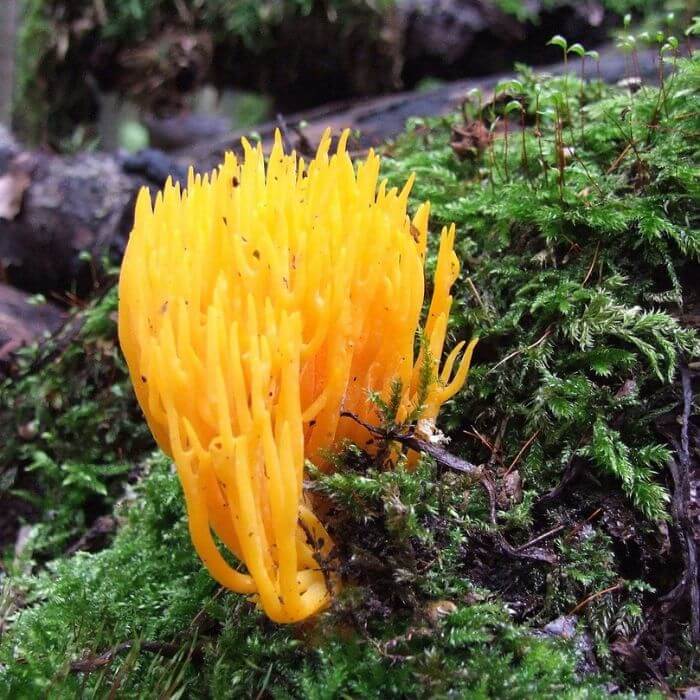
Ramaria aurea, commonly known as the golden coral, belongs to the order Gomphales and is identified by its color, which is more yellowish than golden. This species of fungus can be found growing in clusters on decaying matter.
Like other corals, the fruiting body consists of numerous coral mushrooms that grow to a height of about 5.5 inches tall and about 4.2 inches wide.
13. Pleurotus Pulmonarius (Indian Oyster Mushroom)
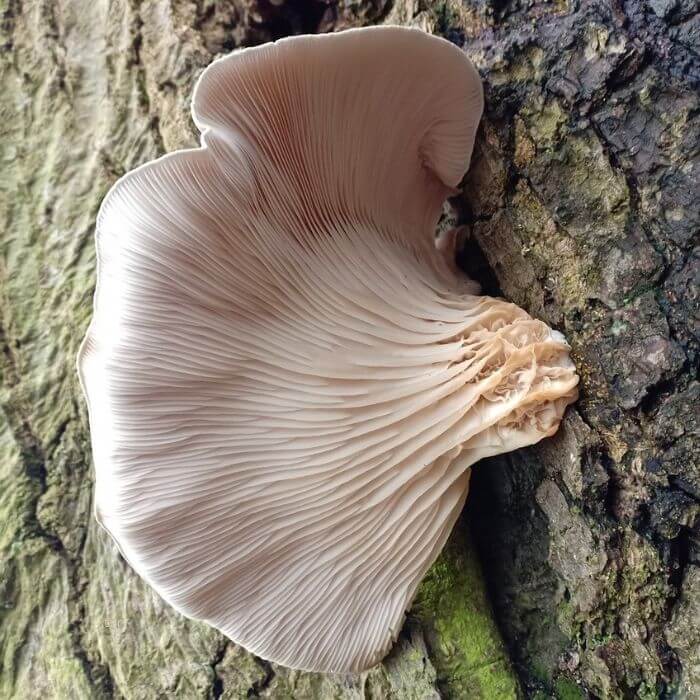
We debated whether to include this oyster mushroom on this list. Ultimately we decided to include it since it’s one of the most cultivated fungus in North America; Utah is no exception. So, if you are looking for an easy-to-cultivate mushroom, you can’t go wrong with the pleurotus pulmonarius.
Pleurotus pulmonarius, also called the Indian Oyster Mushroom, belongs to the family Pleurotaceae and is a cousin of the aspen oyster.
The mushrooms take on an oyster or fan shape with a smooth cap that can range from white to light brown in color. They are also noted for their thick gills underneath the caps which grow laterally down the stem.
FAQs
Where can I find mushrooms in Utah?
The Wasatch Mountains are home to some of the most varied mushroom habitats in the state. This range offers a variety of environments that support different species.
Many edible varieties can be found throughout these mountains such as chanterelles, oyster mushrooms, boletes, and morels.
The area around Salt Lake City also has a number of public parks where it’s possible to find edible fungi growing wild.
Do oyster mushrooms grow in Utah?
Yes, you can find aspen oysters in Utah. Also the unique climate of Utah makes it an ideal environment for growing pink and blue oyster mushrooms.
Where can I find puffballs in Utah?
The best time to find puffballs is during the late summer and early autumn months. From July to October, you can usually spot these mushrooms near damp grassy areas or high-altitude meadows.
To make sure you have identified a true puffball, look for a round shape with no stem and white flesh inside when cut open – this indicates it is indeed a puffball!
Sources:
Hi There,
My name is Jenny. I’m the Chief Editor at Try Green Recipes and besides making yummy and healthy foods for my kids, grandkids, and friends. I’m new to the blogging world but I believe what I have to share is unique and will bring joy to your home. If you are adventurous and want try something tasty, let’s get started.

